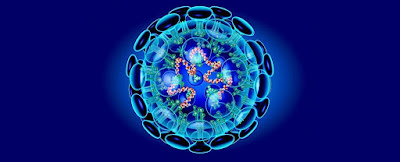Kreb Cycle Steps With Diagram , Steps & Products

Kreb Cycle Krebs cycle is also known as the citric acid cycle or tricarboxylic acid cycle(TCA) . It was discovered by H.A.Kreb in 1953. Kreb Cycle cycle occurs in the matrix of the mitochondria . The whole cycle of Kreb is described in the following figure. The net result of the Krebs cycle is that acetyl group entering the cycle as acetyl- CoA, two molecules of carbon dioxide are produced. Kreb Cycle Steps - Condensation - Acetyl CoA combines with oxaloacetic acid in the presence of citrate synthetase enzyme to form citric acid. It is the first product of the Krebs cycle. Dehydration - Citric acid in presence of aconitase enzyme is converted into cis-aconitic acid. Water is released here. Hydration - Cis-aconitic acid is converted into isocitric acid with the addition of water in the presence of...
